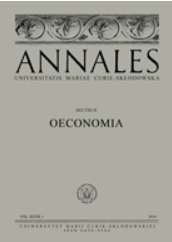Foreign State-Owned Enterprises in the World’s Largest Economies – Comparative and Sectoral Analysis
Foreign State-Owned Enterprises in the World’s Largest Economies – Comparative and Sectoral Analysis
Author(s): Jakub Mroczek, Maciej BałtowskiSubject(s): Economy, National Economy, Supranational / Global Economy, Business Economy / Management
Published by: Wydawnictwo Naukowe Uniwersytetu Marii Curie-Sklodowskiej
Keywords: foreign state-owned enterprises; state-owned enterprise; internationalization; foreign affiliate; foreign investment
Summary/Abstract: Theoretical background: In the last 20–30 years, particularly after the financial crisis of the end of the first decade of the 21st century, state-owned enterprises (SOEs), historically associated with local markets, have increasingly expanded internationally. As a result, foreign state-owned enterprises (FSOEs) have emerged in many countries, particularly in strategic industries. The internationalisation of SOEs is a new, important and relatively under-researched phenomenon in today’s global economy. The literature on the subject so far lacks extensive, comparable figures on FSOEs on a global scale, which is a prerequisite for qualitative research.Purpose of the article: The purpose of this article is to determine – based on original empirical research – the status, significance and sectors of FSOEs in the groups of the largest non-financial enterprises (Top 100, by operating revenues) of the 32 world’s largest economies, as well as the changes that have occurred in this respect between 2009 and 2018. The analysis of FSOEs was carried out with the enterprises divided according to their origins (“green-field FSOEs” and “M&A FSOEs”), industries and home countries. Listed FSOEs were analysed separately.Research methods: The research used the original author’s method of distinguishing (finding) FSOEs, based on the criterion of actual corporate control rather than on the criterion of formal state ownership. The source data, derived mainly from the Orbis database, has been thoroughly supplemented and verified. Special indicators were created for the comparative analysis of FSOEs across the 32 economies under review.Main findings: The results of the analysis determined the status of FSOEs in the group of the 32 world’s largest economies, as well as in distinguished subgroups: developed economies (19) and emerging economies (13). The analysis of the changes in the shares of FSOEs in the studied economies between 2009 and 2018 led to the conclusion that the shares, and therefore the economic importance of FSOEs, increased during the studied period. The sectoral distribution of FSOEs shows that the largest number of them operate in Oil & Gas and Energy sectors.
Journal: Annales Universitatis Mariae Curie-Skłodowska, Sectio H Oeconomia
- Issue Year: LVI/2022
- Issue No: 2
- Page Range: 77-95
- Page Count: 19
- Language: English

